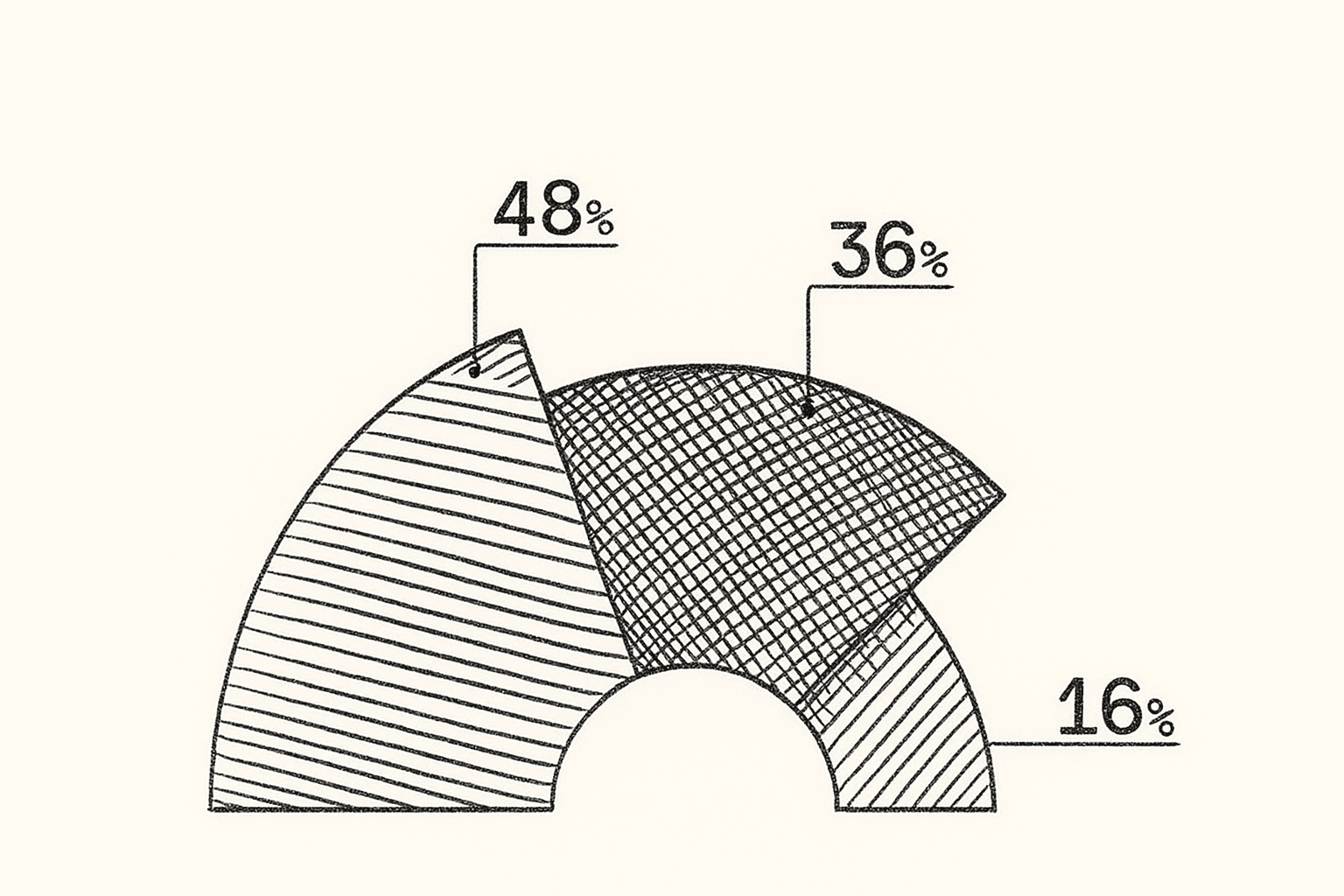
Vibe Coding: How Developers Build in Flow
Let's discover how vibe coding helps developers enter the flow state and build creative projects faster. A complete guide to coding with purpose and rhythm.
Yogini Bende
Apr 08, 2025 • 8 min read
In this new AI landscape and evolving Gen-AI apps, a new approach to writing software development has emerged: vibe coding. This new method is changing how we build applications by leveraging artificial intelligence to handle the coding process.
What is Vibe Coding?
Vibe coding is an innovative approach to software development that uses AI tools to write code based on your instructions while maintaining a creative flow state. Rather than manually typing out every line of code yourself, you focus on communicating your vision and desired outcomes to an AI assistant, which then generates the necessary code. First publicly mentioned by Andrej Karpathy, co-founder of OpenAI, vibe coding has quickly gained popularity as a way for anyone, regardless of traditional programming knowledge, to create functional software.
The essence of vibe coding involves:
Giving into the "vibes" and embracing AI capabilities
Focusing on what you want to build rather than how to build it
Letting AI handle the technical implementation details
Breaking down complex ideas into manageable chunks that AI can understand
Maintaining a flow state where creativity and productivity peak
According to Mihaly Csikszentmihalyi's research on flow state, this psychological condition occurs when we're completely immersed in an activity, experiencing high focus and enjoyment simultaneously. Vibe coding harnesses this concept specifically for software development.
The result? A dramatically lowered barrier to entry for software development, enabling people with great ideas but limited technical skills to bring their visions to life, all while enjoying the process.
Why Vibe Coding Works
Vibe coding works because it aligns with how our brains function at peak performance. When developers enter a flow state, they experience:
Heightened focus and reduced self-consciousness
Time distortion (hours feel like minutes)
Intrinsic motivation and enjoyment
Immediate feedback from their work
Clear goals and a sense of control
Traditional coding often breaks this flow with syntax errors, documentation searches, and debugging sessions. Vibe coding minimizes these interruptions by delegating technical details to AI, allowing developers to maintain their creative momentum.
Studies show that professionals who regularly achieve flow states report higher job satisfaction and productivity. For developers, this translates to more innovative solutions and faster project completion.
Tools & Rituals for Flow State Coding
To begin your vibe coding journey, you'll need both the right AI-powered tools and rituals to maintain your flow state:
Essential AI Tools for Vibe Coding
Cursor: A popular dedicated AI code editor with features specifically designed for vibe coding, including "vibe PMing" for project planning, global and project-specific rules, and "YOLO mode" that automatically runs terminal commands. Cursor also offers checkpoint reverting and direct GitHub integration.
Windsurf: Another popular AI code editor that supports various AI models, including Claude 3.7, Claude 3.5, and OpenAI models. Windsurf offers chat, write, and legacy modes, tab completion, browser preview, and the ability to paste URLs for documentation.
VS Code with AI Extensions: Standard VS Code can be enhanced with AI extensions like Klein and GitHub Copilot to enable vibe coding capabilities.
Replit: A browser-based code editor with integrated AI assistance that allows for easy app deployment.
Bolt.new/Lovable: Browser-based tools that generate applications based on the prompts you shared. You can also read this blog, which explores Lovable AI in detail.
Claude, ChatGPT, and Google Gemini: These AI platforms offer canvas features where you can write and run HTML and JavaScript directly in your browser.
Rituals to Enter and Maintain Flow
Create a dedicated workspace: Minimize distractions in your physical environment
Curate a coding playlist: Music without lyrics often works best (lofi, ambient, or instrumental)
Time-blocking: Use techniques like Pomodoro (25-minute focus sessions) or longer blocks of 90-120 minutes
Communicate your unavailability: Use "Do Not Disturb" mode on communication tools
Start with intention: Begin each session by writing down specific goals
Stay hydrated and take micro-breaks: Brief stretches help maintain energy without breaking flow
How to Vibe Code: Step-by-Step
1. Planning Your Project with "Vibe PMing"
Start by having a clear conversation with your AI assistant about what you want to build:
Ask the AI to create a README file that includes:
Project requirements
Recommended tech stack
Up to 5 milestones for development
Provide feedback to refine these specifications until they match your vision
Keep your tech stack simple. For personal projects, client-side technologies with local storage are often sufficient
2. Setting Up Your Development Environment
Before diving into coding:
Ask the AI about its knowledge cutoff date to understand which library versions it knows best
Use versions the AI is familiar with to minimize compatibility issues
Set up global and project-specific rules in your AI code editor to guide the AI's behavior. Examples include:
Explain your plan before coding
Prioritize simple solutions
Use modules and avoid duplicate code
Only make requested changes
Create a .cursorrules file (for Cursor) or equivalent to provide project-specific instructions to the AI
3. Effective Communication with Your AI Assistant
The key to successful vibe coding lies in how you communicate with the AI:
Request a plan first: Use prompts like "Tell me your plan first; don't code" to review the approach before implementation
Ask for multiple options: Request "a few options, starting with the simplest first" to evaluate different approaches
Encourage thorough thinking: Tell the AI to "Think as long as you need and ask me questions if you need more info."
Be specific about changes: Request modifications to specific files rather than broad, sweeping changes
Include visual context: Share screenshots when discussing design or bugs to help the AI understand the visual elements
4. Implementing Features Through Vibe Coding
When it's time to build your application:
Break tasks into small, testable steps rather than attempting to build everything at once
Start fresh chats for new features to avoid context bloat
Treat the AI like a junior developer by giving clear, specific instructions
Maintain control over core aspects of your application, including the overall idea, UI design, and feature set
Test after every change to catch and fix issues early
5. Debugging in the Vibe Coding Paradigm
When things go wrong (and they will):
You can simply copy and paste error messages into the AI chat and ask it to fix them
Use the "Revert to checkpoint" button in tools like Cursor and Windsurf when necessary
Leverage GitHub for version control as an additional safety net
Start new chats if the AI seems stuck or the context becomes too large
Periodically ask the AI to look for code duplication or redundancies to keep your codebase clean
Examples of Projects Built While Vibe Coding
Vibe coding has enabled developers of all skill levels to build impressive projects while maintaining their creative flow:
Weekend Weather App: With minimal JavaScript experience, you can build a fully functional weather app with location detection and five-day forecasts in just one weekend using Cursor and OpenAI's models.
Task Management System: A custom task management tool tailored specifically to your team's workflow using Claude and Replit.
E-commerce Product Visualizer: An interactive 3D product preview tool for an e-commerce site using AI assistance, despite needing only basic HTML/CSS knowledge.
Personal Finance Dashboard: A customized expense tracking and visualization tool that integrates with your bank's API using vibe coding techniques.
Each of these projects is simple and can help you demonstrate how vibe coding enables creators to focus on solving problems rather than wrestling with technical implementation details.
Advanced Vibe Coding Techniques
Once you're comfortable with the basics, try these advanced approaches:
Understanding the Code:
While you don't need to write code manually, understanding how it works is valuable:
Ask the AI to "explain how this file works in simple terms" or "add comments that explain the code"
For entire codebases, use tools like Repomix to create a single file overview, then ask an AI for a technical architecture explanation
Enhancing Your UI:
Leverage free UI templates online (Bootstrap themes, etc.) for professional-looking interfaces
Instruct the AI to use components from these templates in your application
Voice-Driven Development:
Use voice dictation software like Superwhisper to verbally instruct the AI for a more immersive vibe coding experience.
Best Practices for Effective Vibe Coding
Keep it simple:
Prioritize simplicity in your solutions and avoid unnecessary complexity
Keep files relatively short (200-300 lines) to help the AI understand and modify the code effectively
Maintain quality:
Implement strict version control using Git and GitHub with frequent commits
Test ruthlessly after every change, including manual verification and potentially AI-written tests
Ask for security audits periodically and incorporate basic security best practices
Manage AI limitations:
Use popular technology stacks that the AI is more likely to understand well
Be aware of context window limitations and start new chats when necessary
Paste relevant documentation into the AI's context when using specific APIs or frameworks
Common Mistakes to Avoid
Trusting the AI too much without providing clear direction
Attempting overly complex projects before mastering the basics
Neglecting testing and version control, leading to difficult-to-fix issues
Exposing sensitive information like API keys in your code
Overloading the AI's context window with too much information at once
How to Start Your Vibe Coding Practice
Now, if you are ready to start your vibe coding journey? Here's a simple way to begin:
Pick a small project: Choose something you're genuinely interested in building
Set up your tools: Install Cursor, Windsurf, or add AI extensions to VS Code
Create a coding ritual: Set aside a dedicated time, prepare your environment
Document your process: Keep notes on what works and what doesn't
Share your creation: Launch your project on Product Launchpad and get feedback
What's Next After Vibe Coding?
With AI becoming more sophisticated, vibe coding will help you build more personal software. But it is always a question, I built a product and created a tool, what should I do next?
Share it with the world by launching it on Product Launchpad. If you can even get users to such apps, there is no better feeling than that.
Conclusion
The gap between idea and implementation will continue to shrink with vibe coding, enabling an entirely new generation of creators to build software without traditional programming knowledge.
Vibe coding represents a paradigm shift in how we approach software development. It empowers you to write and ship code faster and to focus on creativity and problem-solving rather than syntax and programming languages. Whether you're a seasoned developer looking to increase productivity or someone with great ideas but limited coding experience, vibe coding offers an exciting new approach to building software.
If you've vibe-coded any software, share it on Peerlist and tag me, I would love to check it out!


